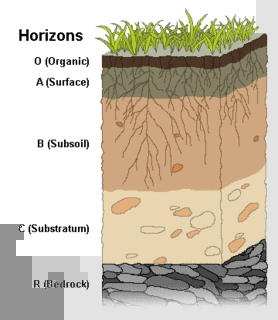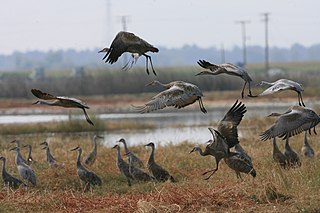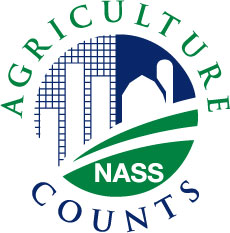
Agriculture is the science and art of cultivating plants and livestock. Agriculture was the key development in the rise of sedentary human civilization, whereby farming of domesticated species created food surpluses that enabled people to live in cities. The history of agriculture began thousands of years ago. After gathering wild grains beginning at least 105,000 years ago, nascent farmers began to plant them around 11,500 years ago. Pigs, sheep and cattle were domesticated over 10,000 years ago. Plants were independently cultivated in at least 11 regions of the world. Industrial agriculture based on large-scale monoculture in the twentieth century came to dominate agricultural output, though about 2 billion people still depended on subsistence agriculture into the twenty-first.

Crop rotation is the practice of growing a series of dissimilar or different types of crops in the same area in sequenced seasons. It is done so that the soil of farms is not used for only one set of nutrients. It helps in reducing soil erosion and increases soil fertility and crop yield.

Winter wheat are strains of wheat that are planted in the autumn to germinate and develop into young plants that remain in the vegetative phase during the winter and resume growth in early spring. Classification into spring or winter wheat is common and traditionally refers to the season during which the crop is grown. For winter wheat, the physiological stage of heading is delayed until the plant experiences vernalization, a period of 30 to 60 days of cold winter temperatures.

The British Agricultural Revolution, or Second Agricultural Revolution, was the unprecedented increase in agricultural production in Britain due to increases in labour and land productivity between the mid-17th and late 19th centuries. Agricultural output grew faster than the population over the century to 1770, and thereafter productivity remained among the highest in the world. This increase in the food supply contributed to the rapid growth of population in England and Wales, from 5.5 million in 1700 to over 9 million by 1801, though domestic production gave way increasingly to food imports in the nineteenth century as the population more than tripled to over 32 million. The rise in productivity accelerated the decline of the agricultural share of the labour force, adding to the urban workforce on which industrialization depended: the Agricultural Revolution has therefore been cited as a cause of the Industrial Revolution.

Shifting cultivation is an agricultural system in which plots of land are cultivated temporarily, then abandoned and allowed to revert to their natural vegetation while the cultivator moves on to another plot. The period of cultivation is usually terminated when the soil shows signs of exhaustion or, more commonly, when the field is overrun by weeds. The length of time that a field is cultivated is usually shorter than the period over which the land is allowed to regenerate by lying fallow. This technique is often used in LEDCs or LICs. In some areas, cultivators use a practice of slash-and-burn as one element of their farming cycle. Others employ land clearing without any burning, and some cultivators are purely migratory and do not use any cyclical method on a given plot. Sometimes no slashing at all is needed where regrowth is purely of grasses, an outcome not uncommon when soils are near exhaustion and need to lie fallow. In shifting agriculture, after two or three years of producing vegetable and grain crops on cleared land, the migrants abandon it for another plot. Land is often cleared by slash-and-burn methods—trees, bushes and forests are cleared by slashing, and the remaining vegetation is burnt. The ashes add potash to the soil. Then the seeds are sown after the rains.
In agriculture, green manure is created by leaving uprooted or sown crop parts to wither on a field so that they serve as a mulch and soil amendment. The plants used for green manure are often cover crops grown primarily for this purpose. Typically, they are ploughed under and incorporated into the soil while green or shortly after flowering. Green manure is commonly associated with organic farming and can play an important role in sustainable annual cropping systems.

A cover crop is planted to manage soil erosion, soil fertility, soil quality, water, weeds, pests, diseases, biodiversity and wildlife in an agroecosystem—an ecological system managed and shaped by humans. Cover crops may be an off-season crop planted after harvesting the cash crop. The cover crop may grow over winter.
A mulch is a layer of material applied to the surface of soil. Reasons for applying mulch include conservation of soil moisture, improving fertility and health of the soil, reducing weed growth and enhancing the visual appeal of the area.

Soil fertility refers to the ability of a soil to sustain agricultural plant growth, i.e. to provide plant habitat and result in sustained and consistent yields of high quality. A fertile soil has the following properties:

Agroforestry is a land use management system in which trees or shrubs are grown around or among crops or pastureland. This intentional combination of agriculture and forestry has varied benefits, including increased biodiversity and reduced erosion. Agroforestry practices have been successful in sub-Saharan Africa and in parts of the United States.

Strip cropping is a method of farming which involves cultivating a field partitioned into long, narrow strips which are alternated in a crop rotation system. It is used when a slope is too steep or when there is no alternative method of preventing soil erosion. The most common crop choices for strip cropping are closely sown crops such as hay, wheat, or other forages which are alternated with strips of row crops, such as corn, soybeans, cotton, or sugar beets. The forages serve primarily as cover crops. In certain systems, strips in particularly eroded areas are used to grow permanent protective vegetation; in most systems, however, all strips are alternated on an annual basis.
In agriculture, tile drainage is a species of drainage system that removes excess water from soil below its surface. Whereas irrigation is the practice of providing additional water to soil when it is naturally too dry, drainage reduces the moisture in soil and thereby increases the amount of air in its pores so as to augment conditions for optimal growth of crops. While surface water can be drained by pumping, open ditches, or both, tile drainage is often the most prudent practice for draining subsurface water.

A row crop is a crop that can be planted in rows wide enough to allow it to be tilled or otherwise cultivated by agricultural machinery, machinery tailored for the seasonal activities of row crops. Such crops are sown by drilling rather than broadcasting.

A buffer strip is an area of land maintained in permanent vegetation that helps to control air, soil, and water quality, along with other environmental problems, dealing primarily on land that is used in agriculture. Buffer strips trap sediment, and enhance filtration of nutrients and pesticides by slowing down runoff that could enter the local surface waters. The root systems of the planted vegetation in these buffers hold soil particles together which alleviate the soil of wind erosion and stabilize stream banks providing protection against substantial erosion and landslides. Farmers can also use buffer strips to square up existing crop fields to provide safety for equipment while also farming more efficiently.
Stubble-mulching refers to leaving the stubble (agriculture) or crop residue essentially in place on the land as a surface cover during a fallow period. Stubble-mulching can prevent soil erosion from wind or water and conserve soil moisture.

The Merced National Wildlife Refuge encompasses 10,262 acres (41.53 km2) of wetlands, native grasslands, vernal pools, and riparian areas in California. It was established in 1951 under the Lea Act to attract wintering waterfowl from adjacent farmland where their foraging was causing crop damage. In the last few decades, changes in agricultural practices and refuge management have reduced these wildlife/crop issues.

Agricultural sustainability in northern Nigeria requires flexibility in both ecological management as well as economic activity. Rainfall occurs only seasonally – and there is a pronounced dry season – however, rainfall is often intensive when it does come, making it necessary for farmers to employ soil moisture conservation techniques. The main crops grown in the region are millet, sorghum, and cowpea, while groundnut and sesame are significant minor crops. Wild foods also serve as an important supplement to the diet, especially during times of food shortage. The bulk of crops are grown during the rainy season which begins in June or July, when temperatures are warmer. There has traditionally been a division between sedentary farmers made up of the Manga and Hausa people, and the nomadic pastoralists known as Fulani, however this has diminished in recent times. Historically, development plans for this region have focused on the use of imported technology and irrigation schemes, while neglecting traditional farming practices of the region. These traditional practices generally focus on the close integration between the raising of livestock and farming, and have been studied in detail in the Kano Close Settled Zone of Northern Nigeria.
Indigenous horticulture is practised in various ways across all inhabited continents. Indigenous refers to the native peoples of a given area and horticulture is the practice of small-scale inter cropping.
Perennial crops are crops developed to reduce inputs necessary to produce food. By greatly reducing the need to replant crops from year-to-year, perennial cropping can reduce topsoil losses due to erosion, increase biological carbon sequestration within the soil, and greatly reduce waterway pollution through agricultural runoff.












